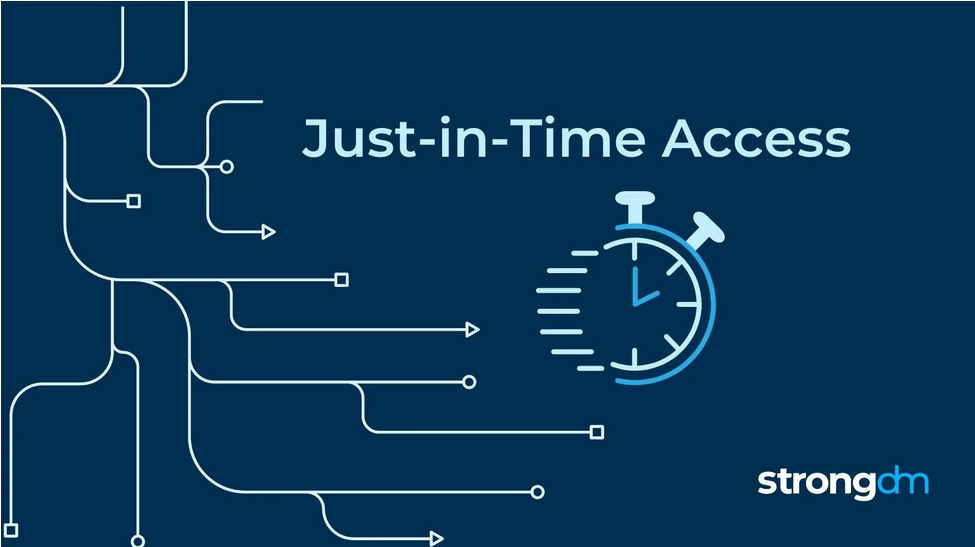In the world of technology security, the concept of “Just-In-Time” (JIT) access is gaining considerable traction. As cyber threats become more sophisticated and prevalent, organizations are seeking robust mechanisms to protect their assets and data. JIT access, rooted in the principles of timely and precise access to resources, has emerged as a cornerstone in this defensive strategy. Let’s delve into why this method has become paramount in today’s security landscape.
Defining Just In Time Access
Just In Time access refers to the security protocol that ensures users gain access to systems, data, or resources only when it’s strictly necessary and for a limited time. In other words, rather than providing permanent or prolonged access to users, JIT ensures that access is granted for specific tasks and revoked as soon as the task is completed.
The Threat Landscape: Why Permanent Access is Risky
Cyber threats are not just about external hackers trying to breach systems. A significant percentage of data breaches and leaks arise from internal threats. Sometimes, these internal breaches are due to disgruntled employees, while other times, they might stem from innocent mistakes. When users have perpetual access to sensitive data or systems, the window of vulnerability is broadened.
The logic is simple: The longer a door is open, the higher the chances someone unwanted might walk through. Similarly, the longer an individual has access to certain resources, the greater the risk of misuse, intentional or not.
The JIT Solution: Closing the Window of Opportunity
By implementing JIT access, organizations can drastically reduce the window of vulnerability. Here’s how:
- Minimizing Exposure: By limiting access to the exact moment it’s required, the exposure of sensitive data and systems is minimized. There’s simply less time for things to go wrong.
- Improved Monitoring: When access is granted on a JIT basis, it’s easier for security teams to monitor who accessed what and when. This focused monitoring can quickly pinpoint anomalies.
- Reducing Insider Threats: With JIT, even trusted employees don’t have perpetual access. This curtails the potential of deliberate internal breaches.
Consider this illustrative data table that captures the differences between permanent and JIT access:
| Access Type | Window of Vulnerability | Monitoring Complexity | Insider Threat Potential |
| Permanent | Broad | High | Elevated |
| Just-In-Time | Narrow | Low | Reduced |
Integrating JIT with Other Security Protocols
Just-In-Time access doesn’t operate in isolation. For optimal results, it’s integrated with other security mechanisms:
- Multi-Factor Authentication (MFA): Before granting JIT access, users can be prompted for multiple forms of identification. This ensures that even if a password is compromised, unauthorized access is thwarted.
- Behavior Analytics: By analyzing typical user behavior, security systems can identify anomalous activities. If someone is requesting access at odd hours or more frequently than usual, it could raise a flag.
- Automated Request and Approval Workflow: Automation ensures that when a user requests access, it undergoes a swift review and approval process, ensuring there are no delays, but also that proper scrutiny is maintained.
Evolving with the Times: The Dynamic Nature of JIT
It’s important to note that as technology progresses, the approach to Just-In-Time access also needs to adapt. With the rise of artificial intelligence and machine learning, security systems can now predict when a user might need access, based on past behaviors and current tasks. For instance, if a system administrator consistently accesses a specific database every Monday at 10 AM for maintenance, AI-backed JIT systems can pre-emptively facilitate this without manual requests. However, while this enhances efficiency, it’s crucial that these predictions are continually evaluated for accuracy to avoid unintentional access permissions.
The User Perspective: Balancing Security with Convenience
From an employee or user’s viewpoint, JIT might initially seem like an additional hurdle. After all, having to request access every time can be perceived as cumbersome. However, this perception can be mitigated by communicating the significant advantages JIT offers in terms of overall data security. Furthermore, as organizations fine-tune their JIT systems, they can ensure rapid approvals, ensuring minimal delays for genuine access needs. By striking the right balance and maintaining open communication lines, organizations can ensure that both security and user convenience are maintained at optimal levels.
Organizational Benefits Beyond Security
While the primary driver for JIT access is security, there are additional organizational benefits:
- Operational Efficiency: When access is granted in a streamlined and time-bound manner, users are likely to utilize it more productively. They know they have limited time, prompting more efficient work.
- Regulatory Compliance: Many industries are subject to regulations regarding data access. JIT can help organizations remain compliant by ensuring only authorized, timely access.
- Cost Savings: A more secure environment means fewer breaches, and fewer breaches translate to reduced costs related to damage control, potential fines, and brand reputation management.
In Conclusion
In a digital age characterized by ever-evolving threats, Just-In-Time access provides organizations with a proactive security stance. By ensuring users only have access when absolutely necessary, JIT minimizes risk and maximizes operational efficiency. As cyber threats continue to rise, JIT isn’t just a best practice; it’s a necessity.









